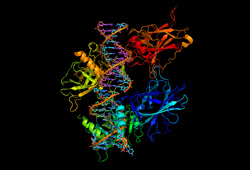IStopping protein accumulation in neurodegenerative disease
Unhealthy aggregates of tau proteins are the main characteristic of tauopathies. Mutations in Tau genes are charged with causing frontotemporal dementias with parkinsonism linked to chromosome 17 (FTDP-17). In research using a mouse model, experiments with FTDP-17-mutant tau proteins displayed similarities to patients with FTDP-17. That is, the mice also developed age-related aggregates of neurofibrillary tangles, behavioural disabilities and neuronal cell loss. In previous research, when expression of the mutant proteins was suppressed at an advanced stage, cognitive deficits were reversed and neuronal loss was halted. Therefore, the 'siRNA-based therapy for cerebral tauopathies' (SITAU) project set out to study if the small interference RNA (siRNA) technique can be used in transgenic mice to smother tau gene expression, behavioural impairments and neuronal cell loss. In order to deliver the siRNA to cells, several techniques and transfection agents were tested with varying results. siRNA, essential to all forms of life, plays a role in encoding genetic information and can be directed to interfere with the expression of a specific gene. Here, SITAU project partners investigated in vivo siRNA delivery of the transfection agents polyethyleneImine(PEI-)-based and Accell-siRNA to evaluate interference efficacy. The results showed this approach was neither effective nor toxic. In studies using Lipofectamine 2000 as a transfection agent, researchers were not able to produce any reliable and consistent reduction in the expression (knockdown) of the proteins. However, experiments with Accell-siRNA, which has been modified to enter cells without a transfection agent, showed that two proteins, glyceraldehyde 3-phosphate dehydrogenase (GAPDH) and cyclophilin B (CycloB), could be effectively knocked down. The project's outcome is a significant step towards examining the effect of siRNA interference in a clinical model of human tau-related disease. Also, more experiments on an animal model will ultimately reveal how siRNA interference can be applied as a treatment strategy for tauopathies and related disorders.

